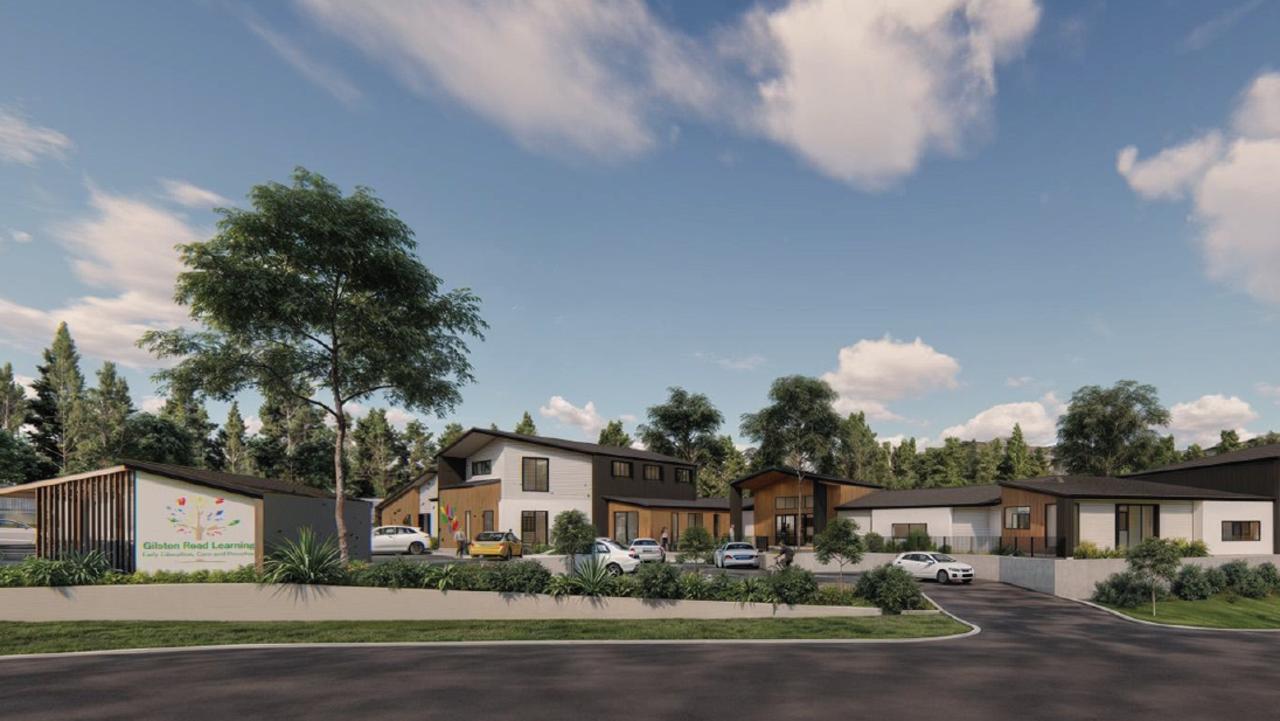Gold Coast property: Biggera Waters and the fight to stop Harbour Town Shopping Centre
This Gold Coast shopping centre was at the heart of a 10-year battle before it was even built, with its opening kicking off an all-out war over the fate of another major retail mecca.
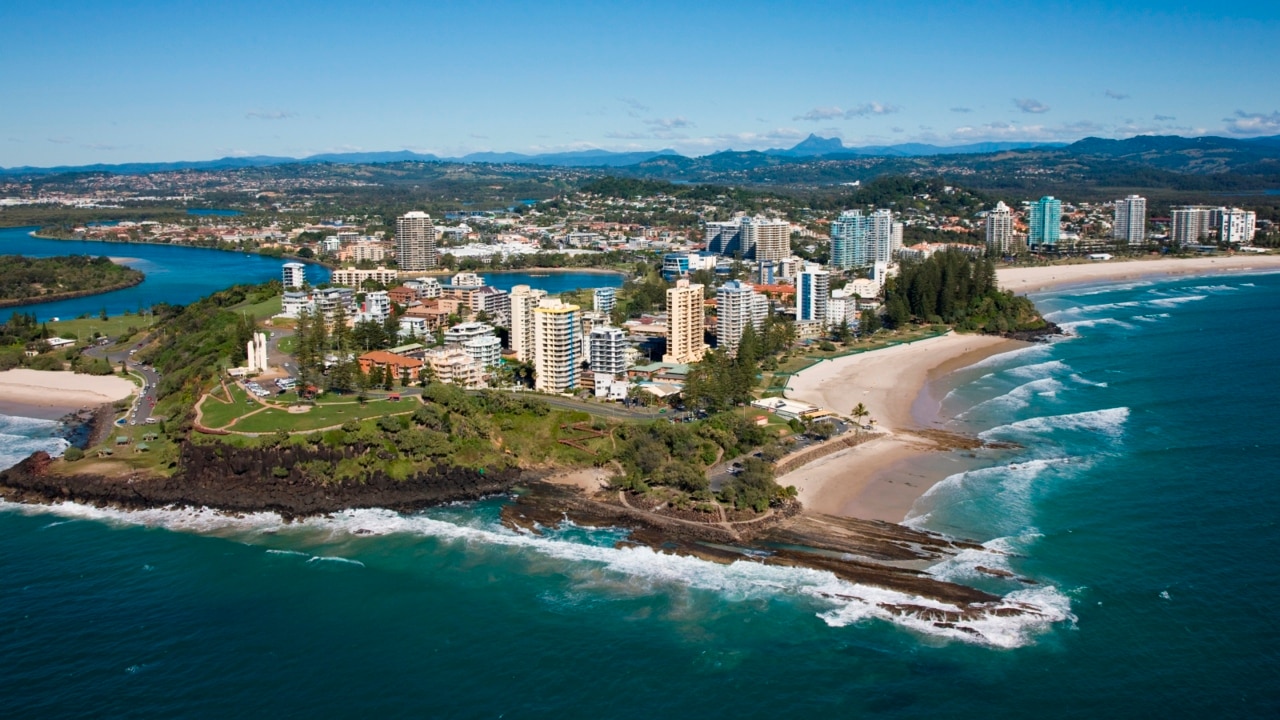
Property
Don't miss out on the headlines from Property. Followed categories will be added to My News.
ONE of the Gold Coast’s biggest shopping centres and some of the city’s most expensive properties can be found in Biggera Waters.
ONE of the Gold Coast’s biggest shopping centres and some of the city’s most expensive properties can be found in Biggera Waters.
More than 9000 people call the suburb home today where property prices are high, trending towards an average prices of $1m and seeing record-breaking sales in 2021.
But the stress is also high with data released earlier this year revealing Biggera Waters residents are among the most vulnerable to mortgage stress in the entire city.
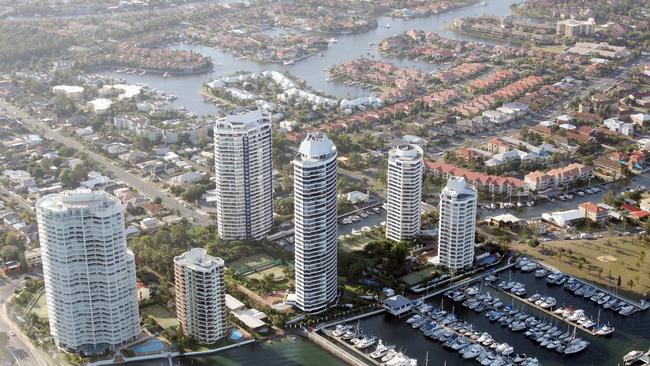
With commercial development continuing to roll out, Biggera Waters remains a suburb in flux.
Things have changed significantly since Harbour Town Shopping Centre was first pitched 35 years ago, sparking a long-running legal battle to prevent it from becoming a reality.
The origins of the modern suburb can be traced back 150 years.
Like many future Gold Coast suburbs, settlers began buying up land in the early 1870s, with the earliest residents a mixture of farmers and fishermen.
As Southport grew and became the region’s urban centre, development of the township began to spread further north.
Labrador was established in the late 1870s and became the area’s waterfront tourist centre while the area today known as Biggera Waters became increasingly busy.
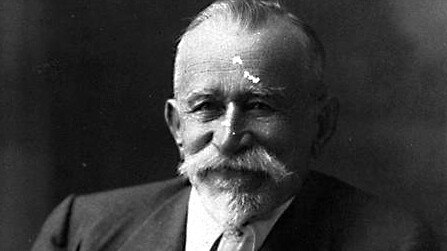
The area’s name came from the creek which runs through it and originates in the Yugambeh language for red ironbark tree.
By the late 1880s, large tracts area were starting to be subdivided and there were enough residents for the Southport Divisional Board, the earliest predecessor to today’s Gold Coast City Council, to build a bridge across the creek and unlocking the area to more residential development, though this largely failed to eventuate at the time.
It also led to Marine Parade being extended along the Broadwater from Southport, through Labrador to the creek.
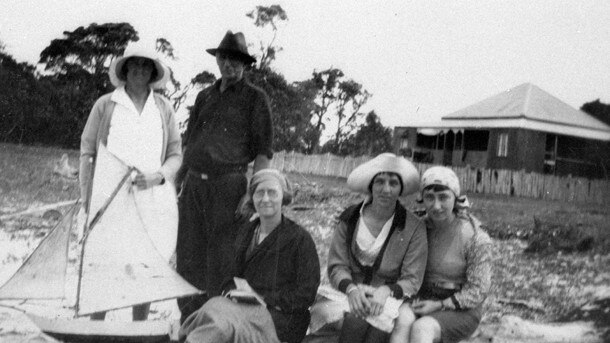
As the 20th Century arrived, the Southport township’s population continued to increase but the area around Biggera Creek continued to revolve around farming and fishing.
Attempts to dredge Biggera Creek for gold also proved fruitless.
Among the most prominent landowners of the era were the Sigantos, who built their home near Land’s End and the Proud family which controlled nearly 500ha of agricultural land.
Their integral role in helping to develop the area was later recognised with streets named for them.
Farming declined during the First World War and much of the remaining land from the Proud property was subdivided for housing, creating much of the modern layout for the area.

By the late 1930s, an aerodrome was approved for the area because of its flat landscape and easy access for water planes.
Construction began but rapidly halted at the beginning of World War II forcing its resources to be diverted.
The project was revisited after the war but was considered surplus to requirements and abandoned.
Large scale development finally began in the 1960s once a modern bridge was built over the creek at Land’s End.
By this point, most of the land was owned by real estate agent R.G Oates who had begun buying up the land in 1939.
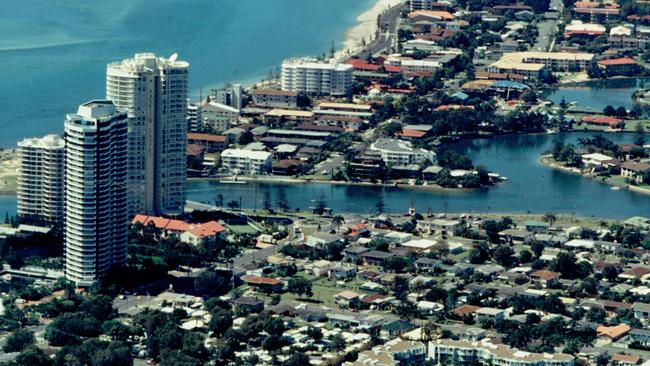
He dubbed it Angler’s Paradise and made a significant profit on his investment.
Fast-forward to the 1980s and the northern Gold Coast was undergoing a dramatic shift.
The decade’s property boom brought with it billions of dollars in investment and the transformation of the suburbs which had once been part of Southport, including the newly gazetted Biggera Waters.
At the time, the average prices of residential lots were just $56,000.

Seeing an opportunity, Lewis Land Corporation bought up significant tracts of land for residential developments, including Huntington Harbor, Key Biscayne and Paradise Point Keys.
PRD Realty director, Gordon Douglas told News Corp in 1986 that the opening of the Seaway two years earlier was the silver bullet to Biggera Waters becoming the city’s next growth area.
“Our research has looked at the stimulus to tourism and the resulting growth in the city’s infrastructure and population. The ongoing effect of the bar project is massive,’’ he said.
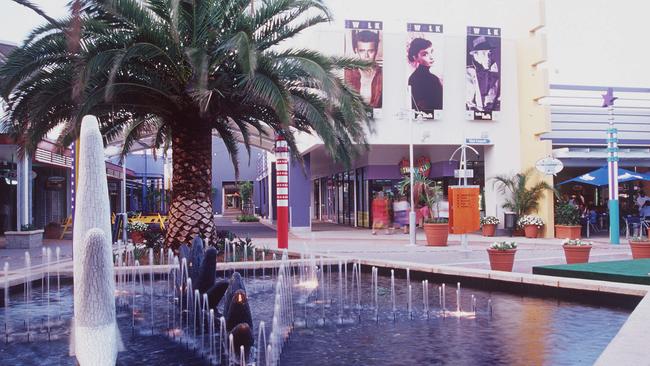
Having seen success with its residential projects, Lewis Land unveiled its biggest Gold Coast project: An 80ha town centre which would become home to 80,000 people and Harbour Town, a giant shopping centre, at its heart.
Opposition to the project was swift and massive, with then-council planning boss Lex Bell declaring it would “destroy the city’s strategic plan and future planning of the area.”
PART TWO: ‘IT’S A FARCE’: EPIC BATTLE TO HALT CONTROVERSIAL SHOPPING CENTRE
HARBOUR Town is today one of the Gold Coast’s most popular shopping centres.
Having been expanded in recent years, it draws thousands of people each day and is the heart of the Biggera Waters community.
The Bulletin last week explored the 150-year history of the suburb, which ballooned from farmland into one of the city’s most desired addresses.
The 1980s brought with it a development boom that culminated in a proposal by Lewis Land Corporation to build Harbour Town.

The initial plan, pitched in late 1987, called for an 80ha town centre that would become home to 80,000 people and a shopping centre at its heart.
However, opposition to the project was swift and massive. Then-council planning boss Lex Bell, for one, declared it would “destroy the city’s strategic plan and future planning of the area”.
It was the final days of Sir Joh Bjelke-Petersen’s reign as Queensland premier and his Nationals government and Local Government Minister Russ Hinze was accused by the Gold Coast City Council of agreeing to the rezoning of the Biggera Waters area for the centre, despite no plans being submitted by the developer to either council or the state.
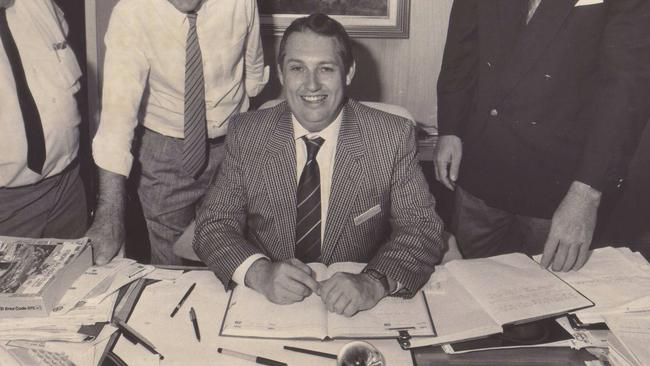
The council was given only 50 days to set planning conditions for the site, something Alderman Bell said was “physically impossible because no one will give us a copy of the plan”.
“They (the state government) have not said no, they just said they would pass the request on to the developer.
“The developers are saying they will consider the request. We are dealing with a phantom project and the only explanation I can see is that there are no plans and the state government decided to give the rezoning in a vacuum.
“The only other possible explanation is that the plans are now being changed.’’
Lewis Land director Deric Finney insisted the planned town centre was “far beyond the reach of conventional town and strategic planning’’.
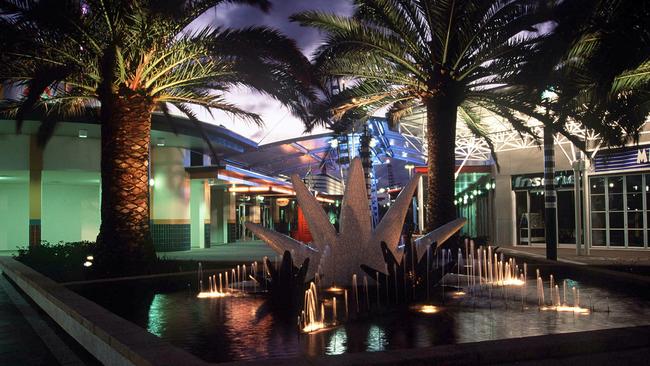
“For that reason we felt fully justified in taking the proposal direct to the state’s principle planning authority, the Queensland government,’’ he said.
By 1989, the government announced it would move ahead with the rezoning despite opposition from the council and business community.
Alderman Bell, by then Mayor, said he was disappointed but not surprised, while Gold Coast Small Business Association president Greg Rix declared the public consultation period a “farce”.
“The thing will go ahead,’’ he said.
“It’s a farce. The Minister is well aware council is against the proposal, small business is against it and the ratepayers are also against it.”
The situation took another turn in March 1990.
The Nationals government was gone and Labor’s Wayne Goss was in power.
His Cabinet overturned the rezoning approval of Harbour Town, by this point a $300m project.
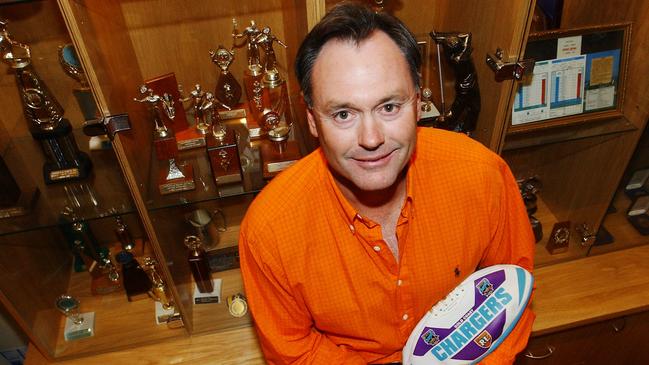
“If Lewis Land Corp wants to proceed with the development, it still has the right to go to the Gold Coast City Council in the proper way,’’ Deputy Premier Tom Burns said.
“The public could then have its rightful say through objections and local government appeal procedures.’’
The project appeared to be dead in the water, but by late 1994 the Goss government again changed its tune, and Local Government Minister Terry Mackenroth pushed through a “Ministerial amendment’’ that avoided the need for the developer to go through council’s town planning process.
The Harbour Town Act was its own special legislation governing the creation of the complex and surrounding development zone.
Lewis Land announced a partnership with billionaire Bob Ell’s Leda Holdings, but the deal soon fell apart.

It took another three years for Lewis Land to announce it would finally begin construction on the $100m first stage of the complex.
But the long-running saga had one final twist.
In late 1997, retail giant Westfield took the project to the Planning and Environment Court, arguing it did not comply with the definition of a regional shopping centre.
Westfield at the time was trying to get its own complex approved at Helensvale and was also taking the council to court over it.
Judge Tony Skoien ruled against Westfield and cleared the final legal hurdle to allow Harbour Town to be built.
Construction finally began in mid-1998, with Lewis Land announcing a major point of difference between Harbour Town and the city’s existing shopping meccas – it would be a direct factory outlet.
PART THREE: ‘ALL OUT WAR’: SHOPPING CENTRE GIANTS AT WAR WITH EACH OTHER
More than a decade of controversy surrounding the Harbour Town shopping centre came to an end in late 1990 when the $100m retail mecca finally opened its doors.
The Biggera Waters complex was the third and final major shopping centre added to the Gold Coast during the final decade of the 20th century.
Australia Fair opened to great fanfare in 1990 and expanded steadily while Robina Town Centre’s arrival in 1996 heralded the start of a long-running battle for supremacy with Pacific Fair.
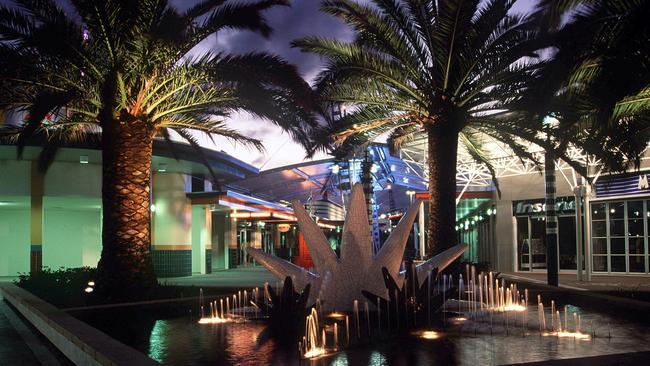
The initial plan, pitched in late 1987, called for an 80ha town centre that would become home to 80,000 people and a shopping centre at its heart.
However, opposition to the project was swift and massive. Then-council planning boss Lex Bell, for one, declared it would “destroy the city’s strategic plan and future planning of the area”.
The National Party government approved the complex two years later in 1989 but, following that year’s state election, the newly elected Wayne Goss-led Labor administration dumped it, declaring there would be “no Russell Hinze-style National Party rezonings’’.
The decision was overturned in 1994 and planning for the development began. However, in another twist in late 1997, retail giant Westfield took Harbour Town owner Lewis Land Corporation to the Planning and Environment Court, arguing it did not comply with the definition of a regional shopping centre.
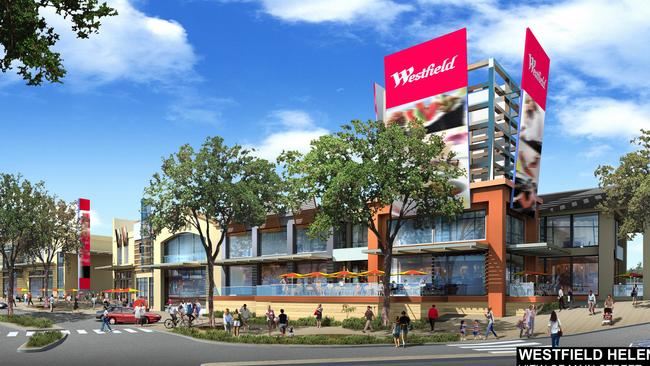
Westfield at the time was trying to get its own complex approved at Helensvale and also took the council to court.
Judge Tony Skoien ruled against Westfield and cleared the final legal hurdle to allow Harbour Town to be built.
Construction began in mid-1998, with Lewis Land announcing a major point of difference between Harbour Town and the city’s existing shopping meccas – it would be a direct factory outlet.
In February 1999, Westfield faced its own battle as the owners of Australia Fair, Runaway Bay and Robina shopping centres jointly announced plans to try and block Westfield Helensvale through the High Court.

Among those who indicated support for the legal action and indicated plans to join it were the Gold Coast City Council, Dreamworld and Lewis Land.
The latter’s lawyer, Larry Lazarides said: “There have been several hearings by the Planning and Environment Court, but none of them have yet dealt with whether Westfield’s development should be approved.
“This is because the hearings to date have been about various, highly technical legal issues, one of which has now been taken to the High Court,” he said.

The High Court ruled months later that the matter was not important enough for it to deal with and sent the case back to the Planning and Environment Court.
Robina Town Centre exited the action after QIC, Westfield’s co-developer, bought it.
The courts finally allowed Westfield to file a new development application.
As the battle raged on, Harbour Town opened in December 1999.
At the time it was touted as the first purpose-built brand-direct shopping centre in Australia.
And on opening day, things were suitably wild.
People climbed the walls and elbowed each other to get at the bargains on offer.

Management, traders and shoppers hailed the opening day as a success.
By 10am the shops were full and busloads of people on shopping tours began arriving.
Lewis Land was suitably delighted by the outcome and its complex becoming a part of the community.
But the legal battle over Westfield Helensvale stretched into the 2000s.
In 2002 the council finally approved the project and the state government was asked to call the shopping centre in to prevent further legal hurdles.
Appeals were immediately lodged by Pacific Fair, Harbour Town, Coomera Waters Estate, Dreamworld, Pacific Pines and the Macquarie Trust.
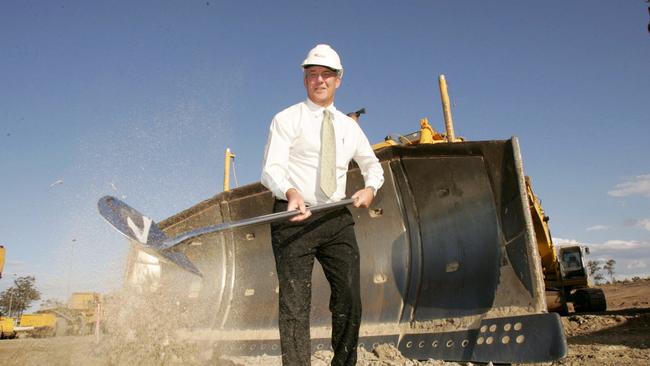
They were quashed by Local Government Minister Nita Cunningham who used her discretionary powers to call the centre in and end the half-decade-long legal back-and-forth.
Westfield Helensvale finally opened in 2005.
While the other shopping centres lost their bids, the battle led to the competitors throwing millions into upgrading their facilities.
Lewis Land CEO Matthew McCarron told the Bulletin this week: “When we originally developed Harbour Town – Australia’s first outlet centre – Lewis Land faced fierce objections from several competitors who had long-term, undefined growth plans for the northern end of the Gold Coast.,” he said.
“Despite this opposition, we knew that the outlet concept would be well received by the local community, and provide a uniquely Gold Coast retail experience.”





